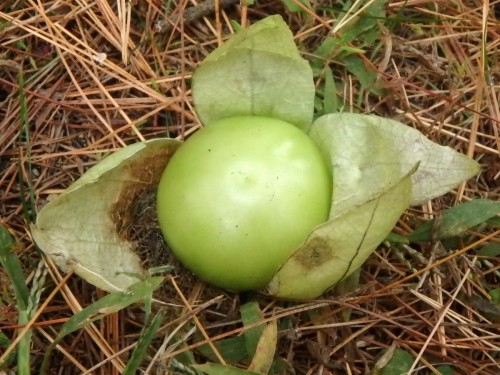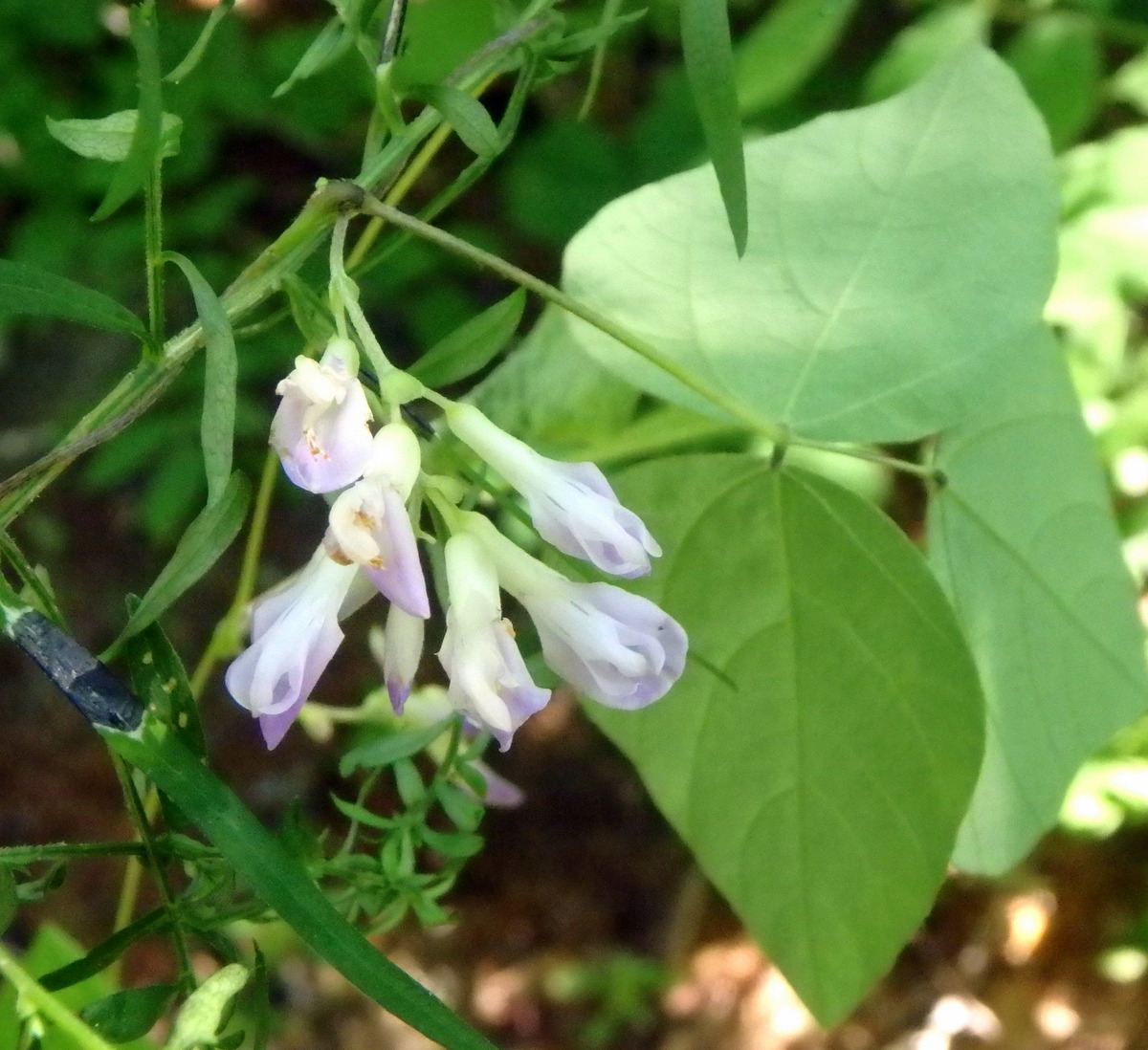
Our most beautiful time of year is almost here, when there are scenes like this just about everywhere you look. It’s much like living inside an impressionistic painting for a while until the hillside forests break into the full, blazing glory of fall.

Our late summer asters keep coming and the tall white aster (Doellingeria umbellata) is one of the most common and easily seen due to its 3-4-foot height. Large, mostly flat-topped flower heads give it another common name of flat-topped aster. They sway in the breeze and are usually covered with bees.

Jewelweed (Impatiens capensis) seemed a little late this year but when I say that about a flower, I often find that it’s me who is expecting to see them earlier than they want to appear. In fact if I look back year to year on this blog, I find that most flowers are fairly consistent in their bloom times and jewelweed is no exception. It usually blooms in early to mid-August so it’s right on schedule.

Hummingbirds, bees, and butterflies pollinate these little flowers. You need a long tongue to reach all the way into that curved nectar spur but I watched an ant trying to come up with a way to get at that sweetness one day. Jewelweed typically blossoms right up until a frost but as day length shortens the plants will produce smaller, closed flowers with no petals and no nectar. They self-pollinate and their sole purpose is to produce plenty of seeds.

I think most people who read this blog know this, but for those who don’t; these are the jewels that give jewelweed its name. Raindrops sparkle like diamonds on the wax coated leaf surfaces. When you come upon a large colony of them after a rain it can be a very beautiful thing.

Since I’m seeing seedpods forming on our beautiful little eastern forked blue curl plants (Trichostema dichotomum) I’m going to say that it’s time we said goodbye, even though in a good year they might bloom through September. If so, it’ll be a bonus. When a heavy enough insect lands on that spotted lower lip those curved anthers, each carrying several white pollen grains smaller than grains of salt, will dip down and dust the insect with pollen. It’s another miraculous event in a world filled with them.

I found some low growing, potato like plants with lots of leaves and just a few small white flowers. It was obvious by the flowers that it is in the nightshade family but that’s about as far as I got. I think it might be the European invasive black nightshade (Solanum nigrum.) Solanum nigrum has been recorded in deposits of the Paleolithic and Mesolithic eras of ancient Britain, so it has been around for a very long time. It was used medicinally as mankind grew and learned and was even mentioned by Pliny the Elder in the first century AD.

Do you see that tiny white flower to the right of center in this shot? All those leaves and one tiny flower? Clearly this plant doesn’t seem that interested in seed production.

But it does produce fruit, and these black berries are what leads me to believe it is black nightshade. There is an American black nightshade (Solanum americanum) but it is native only to the southwest of the country so I doubt this is that plant. There is another that I’ve read about called Solanum L. section Solanum which is nearly hairless but otherwise has the same features. And then there is still another plant called eastern black nightshade (Solanum ptycanthum) but there seems to be much confusion over which plant is which. Though they have been used medicinally for thousands of years Solanum berries contain powerful alkaloids. They are considered toxic and have killed children who have eaten the unripe green berries. A few people do eat the ripe black berries but I think I’ll pass.
NOTE: A helpful reader has identified this plant as Eastern black nightshade (Solanum emulans,) so I can stop wondering about that. Thanks Sara!

Many of the plants in this post are not native and are considered invasive in many instances but only a few like purple loosestrife are truly pests in this region. In a large percentage of cases these plants were brought here because their flowers were beautiful and I can see that beauty, so I can understand the why of it. Many plants were also used medicinally and people went to a lot of trouble to get them here. Imagine bringing plants over on a wooden ship where extra deck space was nearly nonexistent. You’d have to present a very convincing argument I think, though in the case of tansy (Tanacetum vulgare,) which is pictured above and which has a long history of being used as an insect repellant, the ship’s captain might have been a little more understanding. Recent research shows that tansy repels ticks, moths, and other insects, so it might have gotten a free pass on deck space. And of course it might have arrived in the form of seed.

Pearly everlasting (Anaphalis margaritacea) is a plant I don’t have any memories attached to because before a year or so ago I never saw it growing here. Then all of the sudden there it was, and now I see it regularly. It’s a pretty little plant that Native Americans used to treat sores and rheumatism, and they also smoked it to treat colds, and as a tobacco substitute. What I see far more of is sweet everlasting (Pseudognaphalium obtusifolium,) and they used that plant in much the same way. The name everlasting comes from the way the dried flowers will last for years in a dry vase. I keep forgetting to check these flowers for scent but the flowers of sweet everlasting smell like maple syrup.

Orange hawkweed (Hieracium aurantiacum) is another “invasive” that most pay little attention to in this part of the world, but I’ve heard that it can be a real pest in pastures. It was introduced from Europe as a garden ornamental and, as the old familiar story goes, has escaped and is now considered a noxious weed. A single hawkweed flower head can produce between 12 and 50 tiny black seeds, so when you do the math, it is obvious that these plants are here to stay. They are said to be much harder to control than dandelions. Though it’s easy to find many reasons to hate such a plant, we don’t have many orange wildflowers in this part of the country and I enjoy seeing it.

False dandelions (Hypochoeris radicata) are another imported plant but unlike orange hawkweed I see these plants almost everywhere I go at this time of year. If you look at the yellow flowers on tall wiry stems without paying attention to the foliage this plant might look like yellow hawkweed, but its leaves are very different and look more like narrow dandelion leaves. Yellow hawkweed and false dandelion also bloom at different times, which helps when trying to identify them.

Both dandelions and false dandelions have a rosette of edible leaves and a central taproot. The flower stems of false dandelion are solid, tall and wiry while those of true dandelions are hollow and much shorter. Another name for this plant is cats ear.

Native virgin’s bower (Clematis virginiana) drapes itself over shrubs so it can get all of the sunshine that it wants. I’ve also seen it climbing into trees. It is also called old man’s beard and devils’ darning needles. Both names refer to the twisted, feathery seed heads. An extract made from the plant is hallucinogenic (and dangerous) and was used by Native Americans to induce dreams. Mixed with other plants like milkweed, it was also used medicinally. It is a toxic plant that can cause internal bleeding so you have to know what you’re doing to use it.

Another name for virgin’s bower is traveler’s joy and I can say that it is that. Its small white but pretty flowers are another reminder that fall is near. Clusters of them often cover the entire plant. Many bird species eat the seeds and goldfinches line their nests with the soft, feathery seed coverings.

Wild cucumber (Echinocystis lobata) is another white flowered vine that drapes itself over the tops of shrubs to get more sunlight. It climbs using tendrils like a grape vine, unlike virgins’ bower which climbs by curling its leaf stems (petioles) around whatever it is climbing. Both strategies work well and each vine gets plenty of sunlight. You’ll note that the leaves on wild cucumber are two or three times as big as those on virgin’s bower though, and that’s because this vine prefers partial shade over full sunlight.

The flower spikes (Racemes) on wild cucumber grow to 6 inches or more all along the main stem. The greenish white, star shaped male flowers of wild cucumber have 6 petals that are twisted slightly. The female flowers are yellowish green and not at all showy. They grow at the base of the male flower stems. There is usually only one female flower for every 5 or 6 male flowers, which is why there are so few fruits seen on each vine.

If you’d like a native shrub that will attract pollinating insects clethra (Clethra alnifolia) is a very good choice. It’s also called summersweet because of its sweet fragrance. If you have low spots in your yard that get wet occasionally, this is a good shrub to plant in them because it likes moist soil and grows naturally along stream banks and in swampy ground. Insects love it and this one was covered with just about every one that I could name.

Each long upright clethra flower head is packed with small white flowers. Small yes, but also very fragrant; it has the name summersweet for a reason. Some older nurserymen might also know it as sweet pepperbush; whoever gave it that name thought its fruits resembled pepper corns.

The flowers of blue vervain (Verbena hastata) bloom from the bottom of the flower head up, so you can tell how much longer they’ll be blooming. Sometimes a stray plant will make it to first frost but usually not. This is a plant that doesn’t mind wet feet and that’s a good thing because the field that it grew in was flooded by all the rain. I couldn’t get near it so I had to use a lot of zoom for this shot. I love the color of the flowers so I was happy to see so many on this plant.

Pickerel weed (Pontederia cordata) has just about reached the end of its flowering season I thought, when I noticed the third of an inch, brown winged fruits forming. Each mature fruit has a loose skin covering a rather large starchy seed. Native Americans snacked on the raw seeds or roasted them and ground them into flower. They’re said to be quite tasty but you have to be quick, because they’re a favorite of waterfowl.

There are far fewer fragrant white waterlilies in this pond than last time I was here and that tells me that they’re nearing the end of their time with us for this year. They’re very beautiful and I’ll be sorry to not be able to visit them for a few moths. To sit with them is to learn; they ask for nothing but have everything.
He is richest who is content with the least, for contentment is the wealth of nature. ~Socrates
Thanks for coming by.




























































































































































































